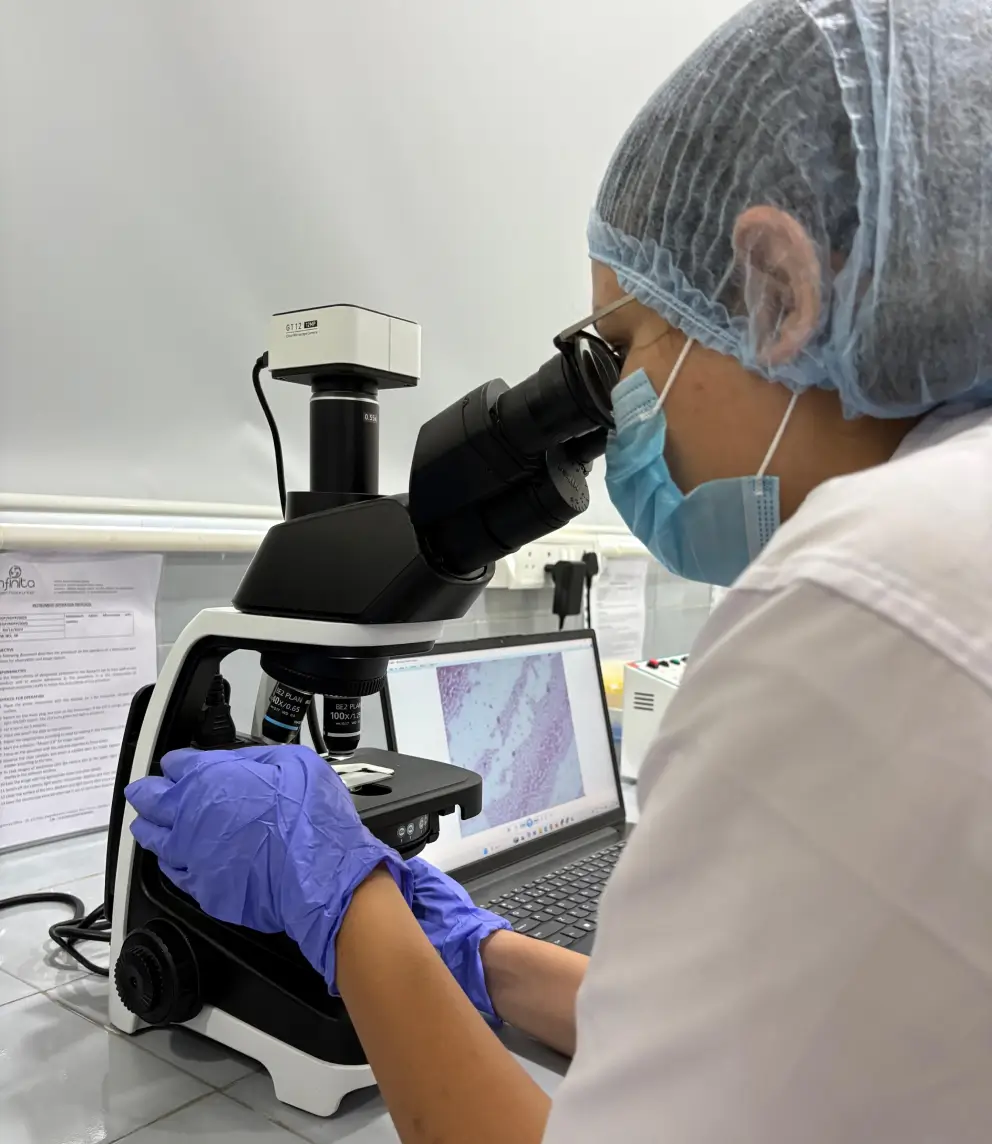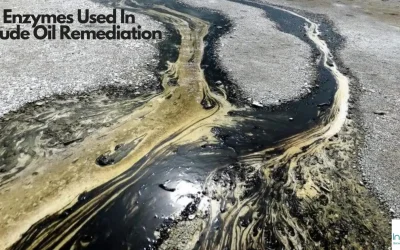What Is Enzyme Catalysis?
Our nature is the master of all types of catalysis. Enzymes are natural catalysts. Enzymes are protein molecules that have an amazing capacity of accelerating the chemical reaction inside our cells. They are also helpful in accelerating the speed of a chemical reaction even without being changed after it completes the reaction.
The function of enzymes may differ depending upon their mechanism. But all enzymes increase the reaction by reducing the triggering energy in the reaction. Just like enzymes and proteins can be solidified by the use of alcohol, heat, acids, and different types of alkaline reagents. To date, people know about more than 2000 enzymes, and more are in the process.
Enzyme catalysis is a simple process under which the rate of reaction changes with the help of an innovative substance known as a catalyst. Enzymes also belong to the class of catalysts, and they work in facilitating the rate of different types of biochemical reactions occurring inside our body. The process of catalysis in which the enzymes function as catalysts are the process of enzyme catalysis.
The enzymes are pretty complex substances that contain nitrogen. Enzymes are also known as proteins that come up with high molecular mass. Enzymes act very efficiently and effectively in our body, and they are responsible for different types of reactions that happen in our body.
Before we look into the details about the process of enzyme catalysis, let’s understand the basic characteristics of enzymes.
- All Enzymes have unique characteristics. They can vary depending upon their specification.
- Enzymes mostly are highly efficient, and they come up with great catalytic powers. This means they can transform almost 1000 and sometimes even up to 10,000 substrate particles into products every second. Enzymes can also easily proceed 108 times quicker as compared to the uncatalyzed reaction. Enzymes never impact the equilibrium constant even if there is a surge in the concentration of the substrate in the product. You will need only a little fraction of enzymes under normal situations for catalyzing and speeding up the chemical reaction.
- Enzymes never change during a chemical reaction.
- Sometimes Amino acid residue of the enzyme can break, or it can sometimes even lead to the genesis of covalent bonds with the substrate. But enzymes can restructure those bonds that breaks and separate them with substrates.
- You can regulate enzymes in different ways. But the functioning of catalysts cannot control. Most of the time, activators, as well as coenzymes, are essential for enzyme catalysis.
This process is beneficial in increasing the potency and effectiveness of the enzymes because of the existence of any weak bond in the middle of the enzyme and the metal ion. In addition to this, certain molecules may inhibit the function of enzymes. They do so by modifying their regular shape and size. Usage of different drugs is closely related to their working as an enzyme inhibitor.
- The efficiency and impact of enzyme catalysts can be maximum when it is at its ideal temperature. An increase, as well as a decrease of the ideal optimum temperature, could lead to a reduction in the catalytic functioning.
- The catalysis of an enzyme can also differ depending upon the PH level of the mixture—enzyme functions at its maximum capability when the PH is in the middle range of 5 to 7.
- The catalytic functioning of the enzyme can reduce by the use of competitive inhibitors, non-competitive inhibitors, as well as irreversible inhibitors. The competitive inhibitors are ones that are tied to the active place of the enzyme. The non-competitive inhibitors are those that can get attached to any other site of the enzyme rather than the active place. All of these enable the enzymes to be less active and sometimes even inactive. The irreversible inhibitors are those that bond with the enzyme itself to make it inactive.
- Most people don’t know this, but the enzymes can sometimes also work reversely. This means that enzymes do not regulate the direction of the chemical reaction. Enzymes only work to accelerate the rate of reaction till it achieves equilibrium.
Since we understand the nature and characteristics of enzymes, it can become an easy task to understand the characteristics of enzyme catalysis.
What Is The Enzyme Catalysis?
Enzyme catalysis is a simple process that leads to an increase in the rate of enzymes. Most enzymes are made up of proteins. But enzymes can also include non-protein components like metal ions and specialized organic molecules as a cofactor. Most cofactors are vitamins, and they are usually linked to their usage in the catalysis of biological processes at the time of metabolism. Catalysis of biochemical reactions is quite important as most metabolically essential reactions have a meagre rate when they do not have catalyzing capability.
Examples
- Transformation of glucose to ethanol in the presence of zymase enzymes
- The hydrolysis process of urea in the presence of urease enzyme is another major example of enzyme catalysis.
- The Hydrolysis process of starch to maltose in the presence of an enzyme called Maltase.
Characteristics
To understand the benefits and impact of enzymes, it is important to understand the characteristics of enzyme catalysis.
Highly Efficient
The enzyme catalyst can raise the speed of reaction by up to a thousand times than the reactions without a catalyst. Enzymes are effective and efficient, and a single molecule of the enzyme can change and transform around a million molecules of reactant every minute.
Small Quantity
Even a minimal quantity of enzyme catalysts can improve the reaction rate several times.
Specific
One of the biggest advantages of a catalyst is that it is peculiar. This means you can easily control different types of biochemical reactions by the use of a specific type of enzyme.
Temperature
The rate of the enzyme reaction and catalysis becomes optimum and achieves maximum efficiency at a particular temperature that is the optimum or the ideal temperature. For example, the temperature of the human body (310K) is optimum for enzyme catalysis reaction to happen.
Optimum PH
The rate of enzyme catalysis reaction is highest at a particular range of PH, which is called the optimum PH, and it is in the middle of 5 and 7.
Control Of Activity
The action of these reactions influence different mechanisms, and they are also influenced by the working of different organic as well as inorganic molecules.
Regulated Activity
The activity of most of the enzymes is highly regulated.
Enhanced By The Presence Of Coenzymes
Catalytic activities of enzymes are influenced by the existence of activators that are also called coenzymes. Activators are metal ions that are weakly bonded to the molecules of enzymes. Thus, they promote the catalytic action of enzymes.
Most active enzymes are also related to non-protein elements like vitamins. These are mostly metal ions that are collectively known as coenzymes. Some of the common metal ions include zinc, magnesium, manganese, potassium, and sodium ions.
Inhibitors & Poisons
The activity of enzymes can reduce or adversely affect the presence of some kinds of compounds that are enzyme inhibitors or poisons. They interact with different functional groups on the surface of the enzyme. They reduce or sometimes even destroy the catalytic activity of the enzyme. Most drugs relate to this action of enzyme inhibitors in our body.
The major function of enzyme catalysts is to increase the rate of a reaction without even being part of the reaction product. The enzymes are particular biological catalysts. They help in catalyzing a single chemical reaction or even a very closely related reaction. The structure, as well as the active site of an enzyme, determines the specificity of the enzyme.
Enzymes are also beneficial in lowering the activation energy, and the reaction proceeds towards the equilibrium rapidly that the uncatalyzed reactions. Both eukaryotic and prokaryotic cells use the property and characteristics of enzyme catalysis to respond to different changes in conditions within the cell. Hundreds of enzymes are commercially available, and they have increasing importance in different industries, including medical and clinical applications.



